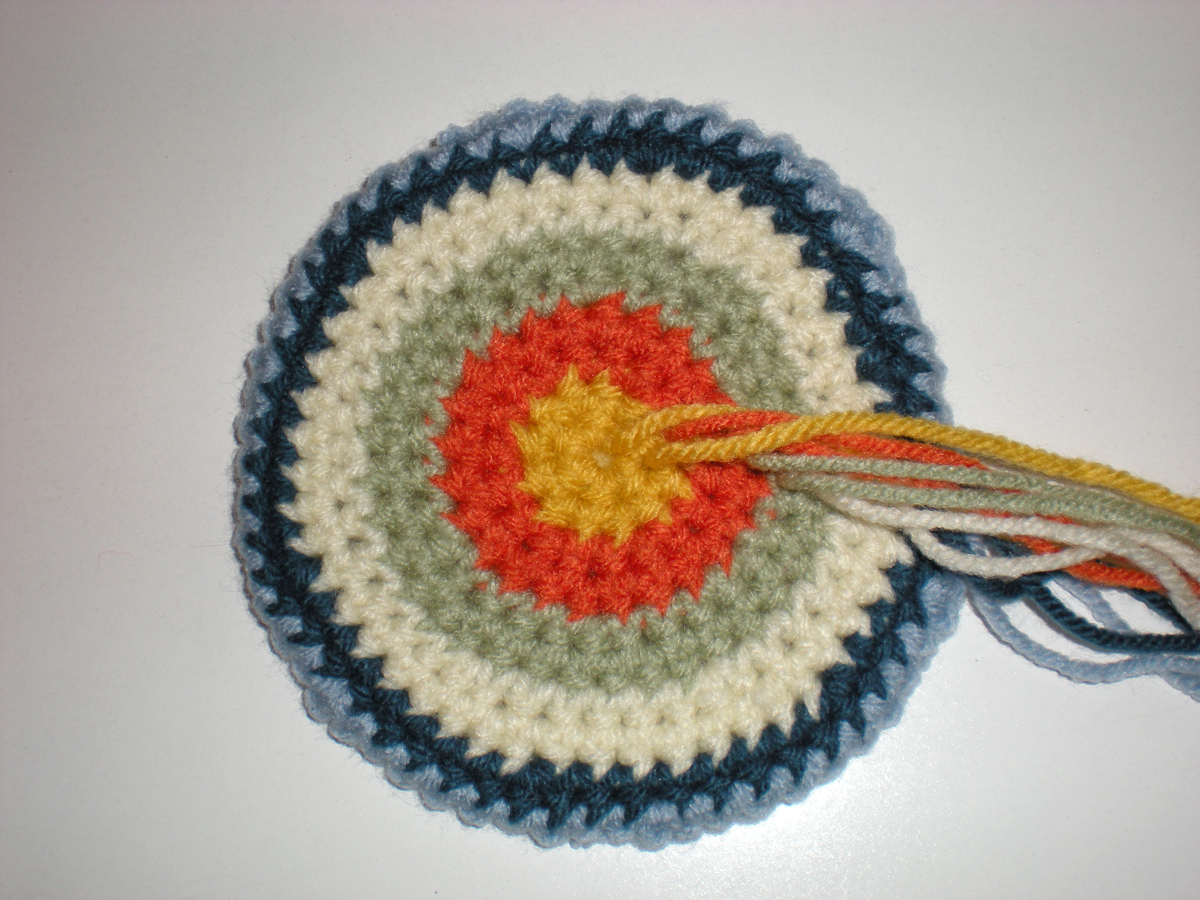A Japanese friend introduced eco tawashi to me about 5 years ago, when he asked me to make a crochet motif with 100% acrylic yarn. He explained that the yarn is made of very fine synthetic fibers similar to microfiber, and that this fine-filamented material is the key to magical cleaning. The acrylic sponge is scratch-free, and you can use it not only for dishes, but also for the bathtub and shower, for washing a car — basically anywhere you want.
The best part of using eco tawashi is that you can do dishes without soap. This way, you save lots of water and you don’t need to use synthetic detergent, which drains into our lakes, rivers, and oceans. If your plates are a little greasy, add some baking soda or vinegar, and you’ll be surprised by the results.
Finished Size
4″ (12cm) diameter, without ears
Gauge: 15 sc 14 rows = 4″4″ (10cm10cm)
Pattern Note
This pattern is in continuous round, without turning or joining at the end of each round, unless otherwise specified. Place a marker in the first stitch of each round so that you can easily distinguish the beginning of each round.


















